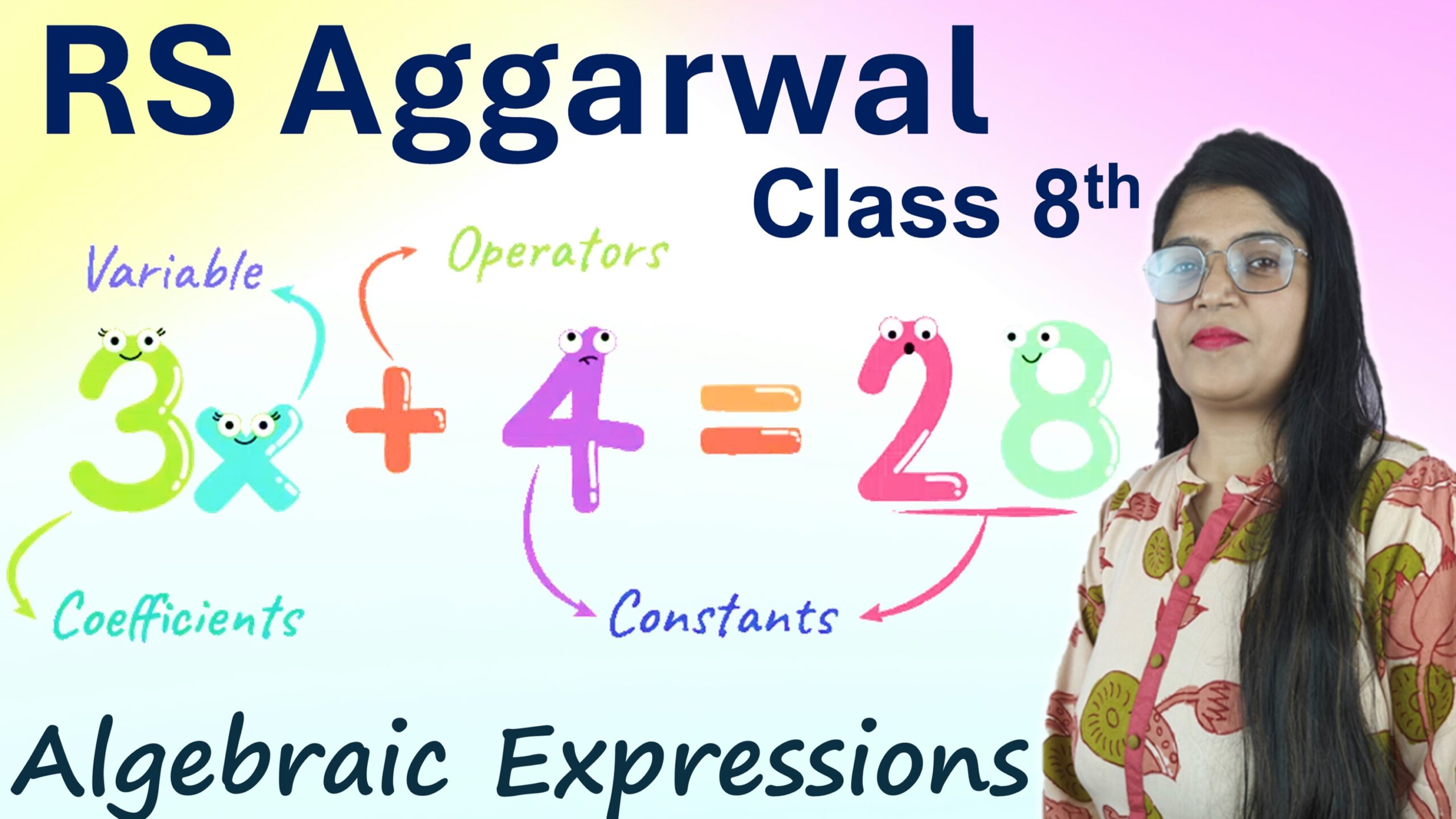Exercise: 2-E
Q1: Evaluate:
i. \(\frac{-2}{3} + \frac{3}{4}\)
Find the LCM of 3 and 4, which is 12.
\(\frac{-2}{3} = \frac{-8}{12}\) and \(\frac{3}{4} = \frac{9}{12}\)
Now, add the fractions:
\[
\frac{-8}{12} + \frac{9}{12} = \frac{1}{12}
\]
Answer:\(\frac{1}{12}\)
ii. \(\frac{7}{-27} + \frac{11}{18}\)
The LCM of 27 and 18 is 54.
\(\frac{7}{-27} = \frac{-14}{54}\) and \(\frac{11}{18} = \frac{33}{54}\)
Now, add the fractions:
\[
\frac{-14}{54} + \frac{33}{54} = \frac{19}{54}
\]
Answer:\(\frac{19}{54}\)
iii. \(\frac{-3}{8} + \frac{-5}{12}\)
The LCM of 8 and 12 is 24.
\(\frac{-3}{8} = \frac{-9}{24}\) and \(\frac{-5}{12} = \frac{-10}{24}\)
Now, add the fractions:
\[
\frac{-9}{24} + \frac{-10}{24} = \frac{-19}{24}
\]
Answer:\(\frac{-19}{24}\)
iv. \(\frac{9}{-16} + \frac{-5}{-12}\)
The LCM of 16 and 12 is 48.
\(\frac{9}{-16} = \frac{-27}{48}\) and \(\frac{-5}{-12} = \frac{20}{48}\)
Now, add the fractions:
\[
\frac{-27}{48} + \frac{20}{48} = \frac{-7}{48}
\]
Answer:\(\frac{-7}{48}\)
v. \(\frac{-5}{9} + \frac{-7}{12} + \frac{11}{18}\)
The LCM of 9, 12, and 18 is 36.
\(\frac{-5}{9} = \frac{-20}{36}\), \(\frac{-7}{12} = \frac{-21}{36}\), and \(\frac{11}{18} = \frac{22}{36}\)
Now, add the fractions:
\[
\frac{-20}{36} + \frac{-21}{36} + \frac{22}{36} = \frac{-19}{36}
\]
Answer:\(\frac{-19}{36}\)
vi. \(\frac{7}{-26} + \frac{16}{39}\)
The LCM of 26 and 39 is 78.
\(\frac{7}{-26} = \frac{-21}{78}\) and \(\frac{16}{39} = \frac{32}{78}\)
Now, add the fractions:
\[
\frac{-21}{78} + \frac{32}{78} = \frac{11}{78}
\]
Answer:\(\frac{11}{78}\)
vii. \(-\frac{2}{3} – \left(\frac{-5}{7}\right)\)
\[
-\frac{2}{3} – \left(\frac{-5}{7}\right) = -\frac{2}{3} + \frac{5}{7}
\]
The LCM of 3 and 7 is 21.
\(-\frac{2}{3} = \frac{-14}{21}\) and \(\frac{5}{7} = \frac{15}{21}\)
Now, add the fractions:
\[
\frac{-14}{21} + \frac{15}{21} = \frac{1}{21}
\]
Answer:\(\frac{1}{21}\)
viii. \(-\frac{5}{7} – \left(-\frac{3}{8}\right)\)
\[
-\frac{5}{7} – \left(-\frac{3}{8}\right) = -\frac{5}{7} + \frac{3}{8}
\]
The LCM of 7 and 8 is 56.
\(-\frac{5}{7} = \frac{-40}{56}\) and \(\frac{3}{8} = \frac{21}{56}\)
Now, add the fractions:
\[
\frac{-40}{56} + \frac{21}{56} = \frac{-19}{56}
\]
Answer:\(\frac{-19}{56}\)
ix. \(\frac{7}{26} + 2 + \frac{-11}{13}\)
Convert 2 to a fraction with denominator 26:
\[
2 = \frac{52}{26}
\]
Now, add the fractions:
\[
\frac{7}{26} + \frac{52}{26} + \frac{-22}{26} = \frac{37}{26}
\]
Answer:\(\frac{37}{26}\)
x. \(-1 + \frac{2}{-3} + \frac{5}{6}\)
Convert -1 to a fraction:
\[
-1 = \frac{-6}{6}
\]
Now, add the fractions:
\[
\frac{-6}{6} + \frac{-2}{3} + \frac{5}{6} = \frac{-6}{6} + \frac{-4}{6} + \frac{5}{6} = \frac{-5}{6}
\]
Answer:\(\frac{-5}{6}\)
Q2: The sum of two rational numbers is \(\frac{-3}{8}\). If one of them is \(\frac{3}{16}\), find the other.
Let the other rational number be \(x\). We have:
\[
x + \frac{3}{16} = \frac{-3}{8}
\]
Now, subtract \(\frac{3}{16}\) from both sides:
\[
x = \frac{-3}{8} – \frac{3}{16}
\]
Find the LCM of 8 and 16, which is 16. Convert \(\frac{-3}{8}\):
\[
\frac{-3}{8} = \frac{-6}{16}
\]
Now, subtract the fractions:
\[
x = \frac{-6}{16} – \frac{3}{16} = \frac{-9}{16}
\]
Answer:\(\frac{-9}{16}\)
Q3: The sum of two rational numbers is -5. If one of them is \(\frac{-52}{25}\) find the other.
Let the other number be \(x\). We have:
\[
x + \frac{-52}{25} = -5
\]
Now, subtract \(\frac{-52}{25}\) from both sides:
\[
x = -5 – \frac{-52}{25} = -5 + \frac{52}{25}
\]
Convert -5 to a fraction with denominator 25:
\[
-5 = \frac{-125}{25}
\]
Now, subtract the fractions:
\[
x = \frac{-125}{25} + \frac{52}{25} = \frac{-73}{25}
\]
Answer:\(\frac{-73}{25}\)
Q4: What rational number should be added to \(-\frac{3}{16}\) to get \(\frac{11}{24}\)?
Let the required rational number be \(x\). We have:
\[
x + \left(-\frac{3}{16}\right) = \frac{11}{24}
\]
Now, add \(\frac{3}{16}\) to both sides:
\[
x = \frac{11}{24} + \frac{3}{16}
\]
Find the LCM of 24 and 16, which is 48. Convert the fractions:
\[
\frac{11}{24} = \frac{22}{48}, \quad \frac{3}{16} = \frac{9}{48}
\]
Now, add the fractions:
\[
x = \frac{22}{48} + \frac{9}{48} = \frac{31}{48}
\]
Answer:\(\frac{31}{48}\)
Q5: What rational number should be added to \(-\frac{3}{5}\) to get 2?
Let the required rational number be \(x\). We have:
\[
x + \left(-\frac{3}{5}\right) = 2
\]
Now, add \(\frac{3}{5}\) to both sides:
\[
x = 2 + \frac{3}{5}
\]
Convert 2 to a fraction with denominator 5:
\[
2 = \frac{10}{5}
\]
Now, add the fractions:
\[
x = \frac{10}{5} + \frac{3}{5} = \frac{13}{5}
\]
Answer:\(\frac{13}{5}\)
Q6: What rational number should be subtracted from \(-\frac{5}{12}\) to get \(\frac{5}{24}\)?
Let the required rational number be \(x\). We have:
\[
-\frac{5}{12} – x = \frac{5}{24}
\]
Now, add \(x\) to both sides:
\[
-\frac{5}{12} – \frac{5}{24} = x
\]
Find the LCM of 12 and 24, which is 24. Convert \(\frac{-5}{12}\):
\[
\frac{-5}{12} = \frac{-10}{24}
\]
Now, subtract the fractions:
\[
x = \frac{-10}{24} – \frac{5}{24} = \frac{-15}{24}
\]
Simplify:
\[
x = \frac{-5}{8}
\]
Answer:\(\frac{-5}{8}\)
Q7: What rational number should be subtracted from \(\frac{5}{8}\) to get \(\frac{8}{5}\)?
Let the required rational number be \(x\). We have:
\[
\frac{5}{8} – x = \frac{8}{5}
\]
Now, subtract \(\frac{5}{8}\) from both sides:
\[
x = \frac{5}{8} – \frac{8}{5}
\]
Find the LCM of 8 and 5, which is 40. Convert the fractions:
\[
\frac{5}{8} = \frac{25}{40}, \quad \frac{8}{5} = \frac{64}{40}
\]
Now, subtract the fractions:
\[
x = \frac{25}{40} – \frac{64}{40} = \frac{-39}{40}
\]
Answer:\(\frac{-39}{40}\)
Q8: Evaluate:
i. \(\left(\frac{7}{8} \times \frac{24}{21}\right) + \left(\frac{-5}{9} \times \frac{6}{-25}\right)\)
First, simplify the two multiplications:
\[
\frac{7}{8} \times \frac{24}{21} = \frac{7 \times 24}{8 \times 21} = \frac{168}{168} = 1
\]
\[
\frac{-5}{9} \times \frac{6}{-25} = \frac{-5 \times 6}{9 \times -25} = \frac{-30}{-225} = \frac{30}{225} = \frac{2}{15}
\]
Now, add the results:
\[
1 + \frac{2}{15} = \frac{15}{15} + \frac{2}{15} = \frac{17}{15}
\]
Answer:\(\frac{17}{15}\)
ii. \(\left(\frac{8}{15} \times \frac{-25}{16}\right) + \left(\frac{-18}{35} \times \frac{5}{6}\right)\)
First, simplify the two multiplications:
\[
\frac{8}{15} \times \frac{-25}{16} = \frac{8 \times -25}{15 \times 16} = \frac{-200}{240} = \frac{-5}{6}
\]
\[
\frac{-18}{35} \times \frac{5}{6} = \frac{-18 \times 5}{35 \times 6} = \frac{-90}{210} = \frac{-3}{7}
\]
Now, add the results:
\[
\frac{-5}{6} + \frac{-3}{7}
\]
Find the LCM of 6 and 7, which is 42:
\[
\frac{-5}{6} = \frac{-35}{42}, \quad \frac{-3}{7} = \frac{-18}{42}
\]
Now, add the fractions:
\[
\frac{-35}{42} + \frac{-18}{42} = \frac{-53}{42}
\]
Answer:\(\frac{-53}{42}\)
iii. \(\left(\frac{18}{33} \times \frac{-22}{27}\right) – \left(\frac{13}{25} \times \frac{-75}{26}\right)\)
First, simplify the two multiplications:
\[
\frac{18}{33} \times \frac{-22}{27} = \frac{18 \times -22}{33 \times 27} = \frac{-396}{891} = \frac{-44}{99} = \frac{-4}{9}
\]
\[
\frac{13}{25} \times \frac{-75}{26} = \frac{13 \times -75}{25 \times 26} = \frac{-975}{650} = \frac{-39}{26} = \frac{-3}{2}
\]
Now, subtract the results:
\[
\frac{-4}{9} – \frac{-3}{2}
\]
Find the LCM of 9 and 2, which is 18:
\[
\frac{-4}{9} = \frac{-8}{18}, \quad \frac{-3}{2} = \frac{-27}{18}
\]
Now, subtract the fractions:
\[
\frac{-8}{18} – \frac{-27}{18} = \frac{-8 + 27}{18} = \frac{19}{18}
\]
Answer:\(\frac{19}{18}\)
iv. \(\left(\frac{-13}{7} \times \frac{-35}{39}\right) – \left(\frac{-7}{45} \times \frac{9}{14}\right)\)
First, simplify the two multiplications:
\[
\frac{-13}{7} \times \frac{-35}{39} = \frac{-13 \times -35}{7 \times 39} = \frac{455}{273} = \frac{5}{3}
\]
\[
\frac{-7}{45} \times \frac{9}{14} = \frac{-7 \times 9}{45 \times 14} = \frac{-63}{630} = \frac{-1}{10}
\]
Now, subtract the results:
\[
\frac{5}{3} – \frac{-1}{10}
\]
Find the LCM of 3 and 10, which is 30:
\[
\frac{5}{3} = \frac{50}{30}, \quad \frac{-1}{10} = \frac{-3}{30}
\]
Now, subtract the fractions:
\[
\frac{50}{30} – \frac{-3}{30} = \frac{50 + 3}{30} = \frac{53}{30}
\]
Answer:\(\frac{53}{30}\)
Q9: The product of two rational numbers is 24. If one of them is \(\frac{-36}{11}\), find the other.
Solution:
Let the other number be \(x\). We have:
\[
x \times \frac{-36}{11} = 24
\]
Now, multiply both sides by the reciprocal of \(\frac{-36}{11}\):
\[
x = \frac{24 \times 11}{-36} = \frac{264}{-36} = \frac{-22}{3}
\]
Answer:\(\frac{-22}{3}\)
Q10: By what rational number should we multiply \(\frac{20}{-9}\), so that the product is \(\frac{-5}{9}\)?
Solution:
Let the required number be \(x\). We have:
\[
\frac{20}{-9} \times x = \frac{-5}{9}
\]
Now, multiply both sides by the reciprocal of \(\frac{20}{-9}\):
\[
x = \frac{-5}{9} \times \frac{-9}{20} = \frac{45}{180} = \frac{1}{4}
\]
Answer:\(\frac{1}{4}\)
Q11: State true or false
i. The quotient of two integers is always a rational number.
False. The quotient of two integers is not always a rational number.
ii. \(-\frac{6}{11}\) is greater than \(\frac{4}{11}\).
False. \(-\frac{6}{11}\) is less than \(\frac{4}{11}\).
iii. \(-\frac{9}{32}+\frac{5}{23}=\frac{-9+5}{32+23}=\frac{-4}{55}\)
False. The addition of fractions does not follow this rule. The correct addition is \(\frac{-9}{32} + \frac{5}{23} = \frac{-207 + 160}{736} = \frac{-47}{736}\).
iv. \(1-\frac{3}{15}=\frac{-2}{15}\)
False. \(1 – \frac{3}{15} = \frac{15}{15} – \frac{3}{15} = \frac{12}{15} = \frac{4}{5}\).
Q12: Find x, if:
i. \(-\frac{5}{8} + x = \frac{7}{12}\)
\[
x = \frac{7}{12} + \frac{5}{8} = \frac{14}{24} + \frac{15}{24} = \frac{29}{24}
\]
Answer:\(\frac{29}{24}\)
ii. \(\frac{2}{5} + x = -2\)
\[
x = -2 – \frac{2}{5} = \frac{-10}{5} – \frac{2}{5} = \frac{-12}{5}
\]
Answer:\(\frac{-12}{5}\)
iii. \(2 + x = \frac{-2}{3}\)
\[
x = \frac{-2}{3} – 2 = \frac{-2}{3} – \frac{6}{3} = \frac{-8}{3}
\]
Answer:\(\frac{-8}{3}\)
iv. \(2\frac{1}{2}x = 33\frac{1}{3}\)
Convert mixed fractions to improper:
\[
2\frac{1}{2} = \frac{5}{2}, \quad 33\frac{1}{3} = \frac{100}{3}
\]
Now, solve for \(x\):
\[
\frac{5}{2}x = \frac{100}{3} \quad \Rightarrow \quad x = \frac{100}{3} \times \frac{2}{5} = \frac{200}{15} = \frac{40}{3}
\]
Answer:\(\frac{40}{3}\)
v. \(-\frac{9}{35}x = \frac{3}{5}\)
\[
x = \frac{3}{5} \times \frac{-35}{9} = \frac{-105}{45} = \frac{-7}{3}
\]
Answer:\(\frac{-7}{3}\)
Q13: Manish walks \(\frac{8}{9}\) km from a place P towards East. From there, he walks \(2\frac{1}{2}\) km towards West. Find his final position from the place P.
Manish walks \(\frac{8}{9}\) km East and \(2\frac{1}{2}\) km West, which is equivalent to \(\frac{5}{2}\) km West. To find his final position, subtract the distances:
\[
\frac{5}{2} – \frac{8}{9}
\]
Find the LCM of 2 and 9, which is 18. Convert the fractions:
\[
\frac{5}{2} = \frac{45}{18}, \quad \frac{8}{9} = \frac{16}{18}
\]
Now, subtract:
\[
\frac{45}{18} – \frac{16}{18} = \frac{29}{18}
\]
Answer:\(\frac{29}{18}\) km West
Q14: State true or false
i. If \(\frac{p}{q}\) is a rational number and m is an integer, then \(\frac{p}{q}=\frac{p\times m}{q\times m}\).
True. Multiplying both numerator and denominator by the same integer does not change the value of the rational number.
ii. If q is a positive integer and p and q are co-prime numbers, then \(\frac{p}{q}\) is a rational number.
True. If p and q are co-prime, \(\frac{p}{q}\) is in its simplest form and is always a rational number.
Q15: Find x such that \(-\frac{3}{8}\) and \(\frac{x}{16}\) are equivalent rational numbers.
Solution:
We are given:
\[
-\frac{3}{8} = \frac{x}{16}
\]
Cross-multiply to find \(x\):
\[
-3 \times 16 = 8 \times x \quad \Rightarrow \quad -48 = 8x \quad \Rightarrow \quad x = \frac{-48}{8} = -6
\]
Answer:\(-6\)
Q16: What should be added to \(\left(-\frac{17}{6}+\frac{-7}{8}\right)\) to get -2?
Solution:
First, simplify \(\left(-\frac{17}{6} + \frac{-7}{8}\right)\). Find the LCM of 6 and 8, which is 24:
\[
-\frac{17}{6} = -\frac{68}{24}, \quad -\frac{7}{8} = -\frac{21}{24}
\]
Now, add the fractions:
\[
-\frac{68}{24} + -\frac{21}{24} = \frac{-89}{24}
\]
Now, let the required number be \(x\):
\[
\frac{-89}{24} + x = -2
\]
Solve for \(x\):
\[
x = -2 – \frac{-89}{24} = -2 + \frac{89}{24} = \frac{-48}{24} + \frac{89}{24} = \frac{41}{24}
\]
Answer:\(\frac{41}{24}\)






